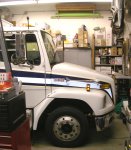Brewdiak
kodiak conversionator
wow great thread, got mine delivered today - also from GEV working with Shawn M ... fantastic ... sight unseen and not disappointed at all
glad i stumbled on this particular thread lots of good info, though i've only read the first and last 10 pages so far (skipped ahead to see the end ). I start into mine tomorrow, but at least it's already registered in WA as an RV (though i had pulled a DOT number since I thought I had to register as a commercial truck until converted...). First project is to get all the markings off )
). I start into mine tomorrow, but at least it's already registered in WA as an RV (though i had pulled a DOT number since I thought I had to register as a commercial truck until converted...). First project is to get all the markings off )
thanks for taking the time to post all your projects and fixes
glad i stumbled on this particular thread lots of good info, though i've only read the first and last 10 pages so far (skipped ahead to see the end
thanks for taking the time to post all your projects and fixes
Last edited:


